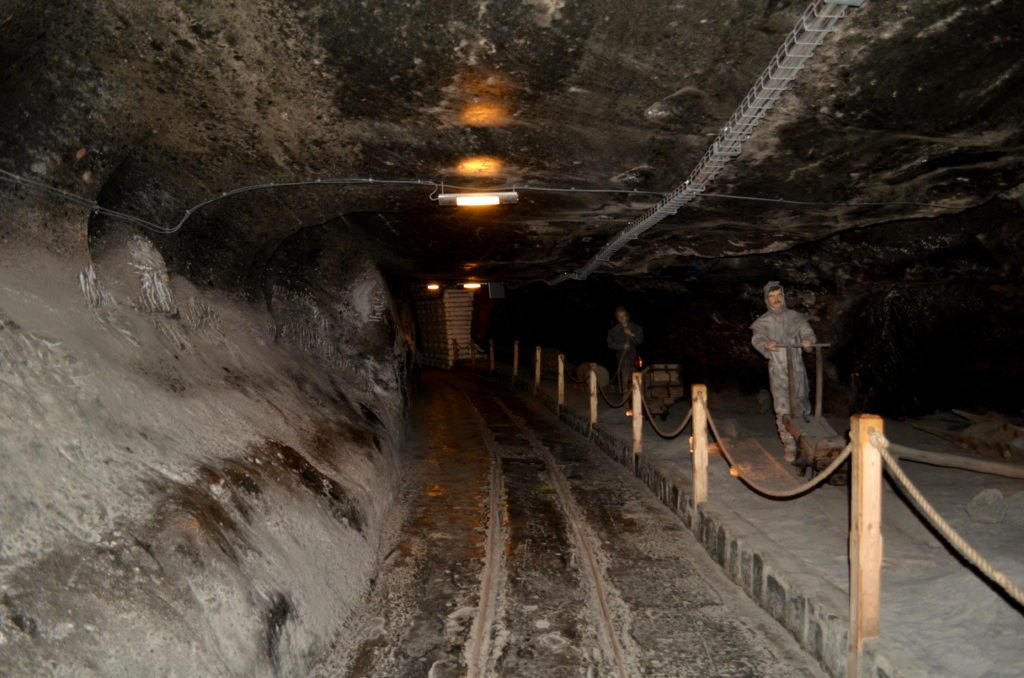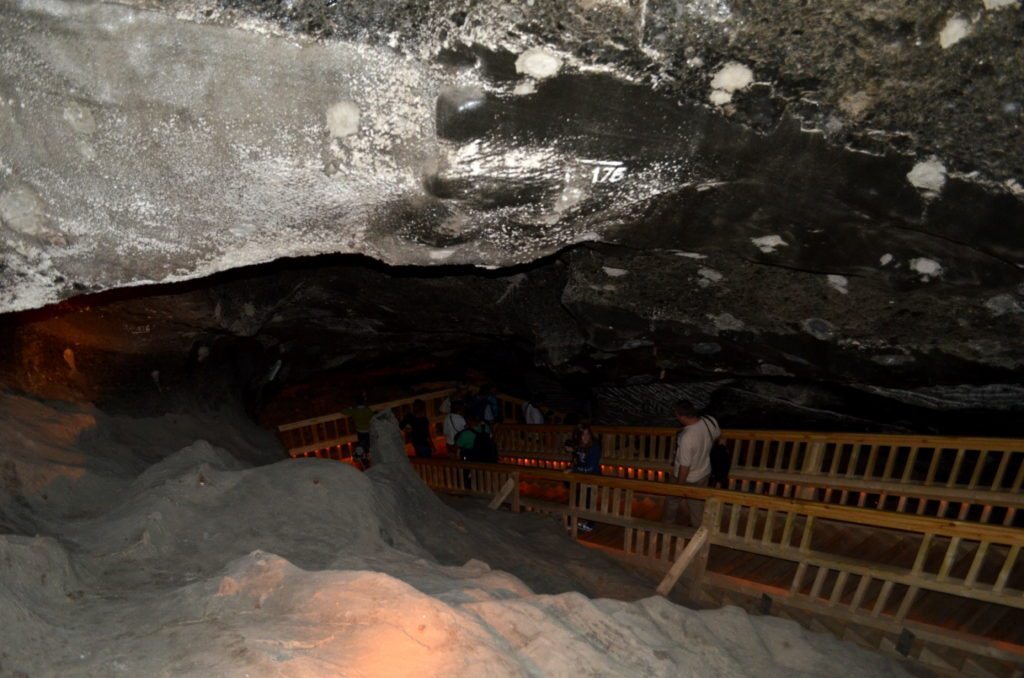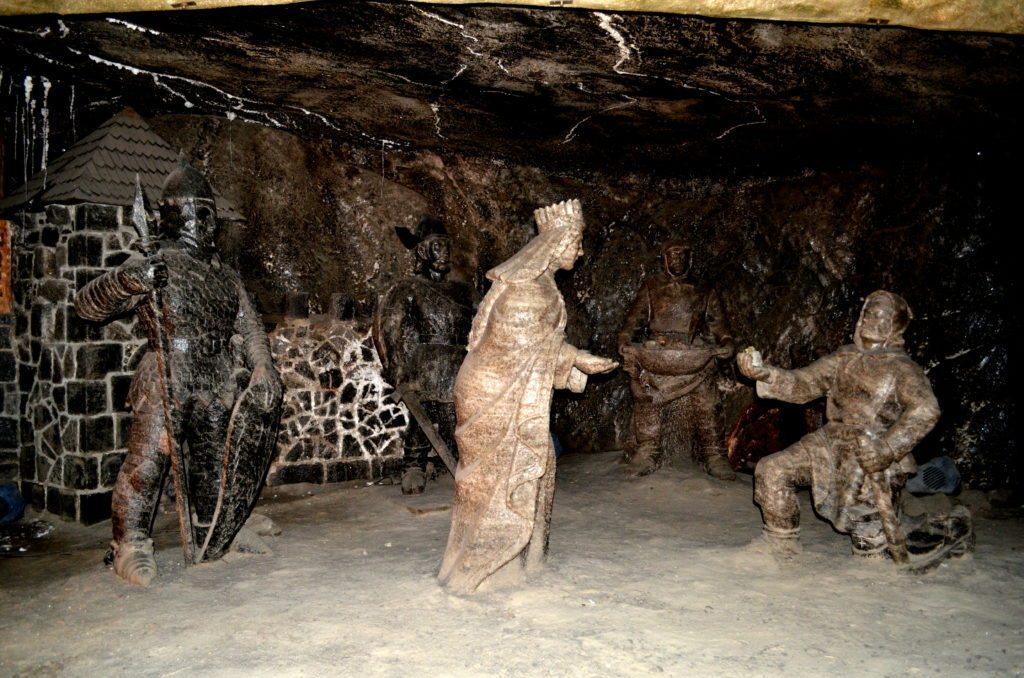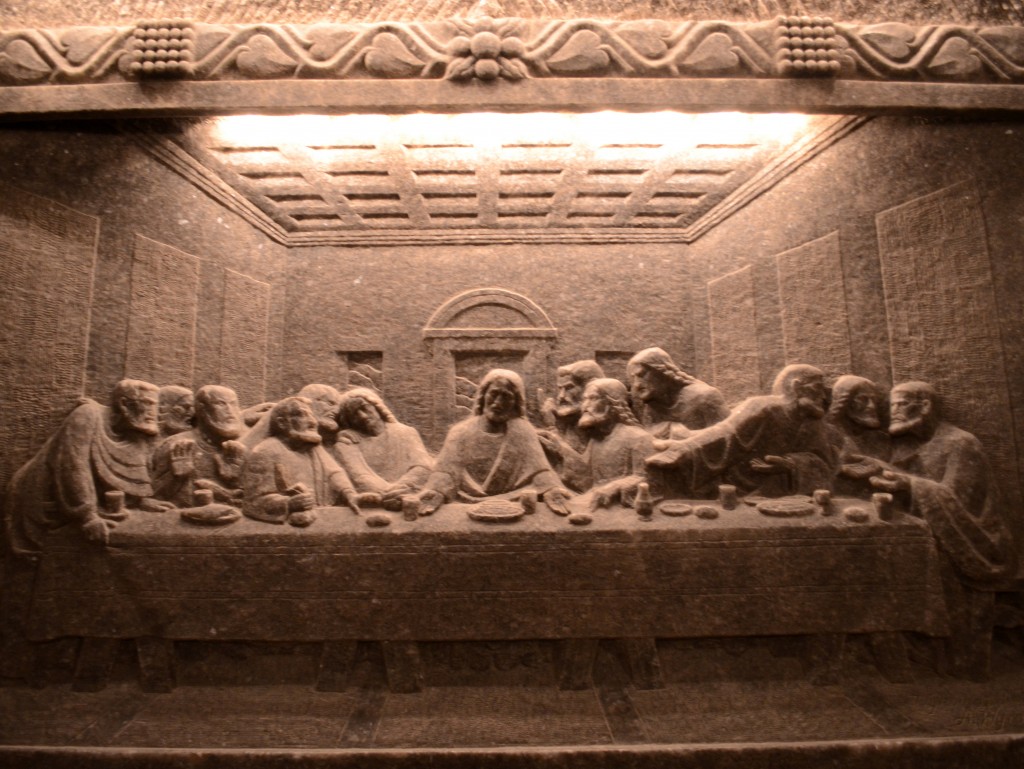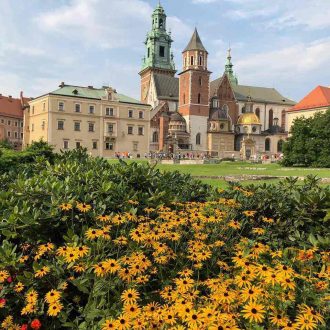It is almost lunch time and the sky changes hues from a bright blue to a dull grey. The sun peeps out shyly from the clouds as we get ready for another journey. We are in Krakow in Poland and the guide tells us that our next destination is about 300 metres (almost 1000 feet ) below sea level. I ask him about lunch and he smiles at me and says that we will be climbing down 400 steps to work on our appetite . I am heading to a 800 year old salt mine with nine working floors underground, in a little town called Wieliczka in Poland.
If someone was to tell me that I could lunch, have conferences, pray in chapels, get married and have a banquet underground, I would probably take it all with a pinch of salt. However, here the entire experience comes with a mine of rock salt.
We descend a flight of 400 wooden steps to reach the first floor of the salt mine, located at the depth of 64 metres or 210 feet below . As we go further into the abysses of the earth, I get a dose of history.
Wieliczka’s tryst with salt goes back almost 5000 years ago, when it was extracted from dried brine springs in the area. It was believed that the salt deposits were formed in the region when the waters of the Miocene sea had evaporated and locals had discovered brine wells around the town – the earliest evidence of the same probably goes back to the 12th century when rock salt was discovered.
It is dark and the miners tell us their story as we watch them fight natural and mysterious forces. In a moment I am transported into an entirely different world and am absolutely awestruck. In the dim light, with shafts of air cooling us , I can see rock salt deposits on the walls of the caves . While the guide takes us on a tour of the techniques and hardships faced by the miners , as we go past the museum exhibits, my eyes are glued to some of the brilliant art created by these men out of rock salt.
There is astronomer Nicholas Copernicus looking at me and I walk past the man of letters, Goethe. The kings and their subjects are carved here in rock salt as well. Some of the carvings tell you Biblical tales as the mine is filled with sculptures from the scriptures. It is dark and dingy but the stories fascinate us.
The wooden staircase takes us further down as our eyes get used to the dark chambers. Each chamber has a tale and a title associated with it. My favourite is the one that tells me the legend behind the salt mine. A man kneels below a lady holding a ring. Just before we assume a romantic angle to this sculpture carved in rock salt in the 17th century in the Janowice Chamber by miner, Mieczyslaw Kluzek , my guide tells me the about “The Great Legend.”
It was believed that the legend and the salt travelled all the way from Hungary to Poland with St Kinga, daughter of the Hungarian monarch , Bela IV who was behind the discovery of salt here. When she got married to the Polish Duke, Boleslaw the Chaste, she was given a salt mine at Marmaros as her dowry. She cast her ring in the shaft of the mine and when she was on her way to Krakow, she asked her men to dig a well . They not only discovered salt, but Kinga’s engagement ring as well.
The guide , narrating this story took us to one of the most beautiful chapels carved underground at 101 metres as St Kinga, to whom the chapel is dedicated became the patroness of all the salt miners. The sculptures carved here in this 19th century chapel take your breath away as you realize that even the crystals of the chandeliers here are of rock salt. Various sculptors and miners joined hands to carve Biblical stories on the walls of this spectacular chapel.
There are several chambers, chapels and even a cathedral here. My eyes get used to the darkness as we see statues carved of rock salt everywhere. And then the guide promises us a beautiful landscape created below the earth. The lights come up as we see an artificial lake glistening in the darkness. Deep and mysterious , it has its own little secrets.
As my journey ends, I meet the most important man of the mine – He, The Warden. The man who watches over the miners, takes care of them, protects them from the vagaries of nature and warns them of potential dangers. He is the spirit of the mine , standing there, cast in rock salt and has a chamber of his own as he watches us on our little journey.
After a quick meal, we are then finally, locked in a little door which is like a small elevator that takes back from a dark medieval world from the depths of the earth to our familiar turf in just 30 seconds . It was one salty experience down under.

